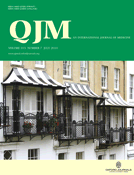Celiac.com 12/06/2007 - Celiac is an autoimmune disease triggered by consumption of gluten in genetically predisposed people. The only treatment for celiac disease is a diet free of gluten, a group of proteins found in some grass-related grains such as wheat, rye, and barley. A healthy gluten-free diet is typically rich in unprocessed foods like fruits, vegetables, and meats; previous studies have established the high relative cost of such a diet. Researchers from the Celiac Disease Center at Columbia University sought to further understand the economic burden of a gluten-free diet by focusing on the gluten-free substitutes for naturally gluten-containing foods.
Using data from the United States Department of Agriculture (USDA) about typical household food consumption, researchers assembled “market baskets” of regular and gluten-free foods. The availability and the difference in price between the 11 regular and gluten-free items in the market basket were compared according the type of store and the region in which the items were purchased. Researchers surveyed local grocery stores, upscale grocery stores or regional chains, health food stores, and 4 online sites. Regions of the country were represented by New York City and Westchester County, Portland OR, Atlanta GA, Rapid City SD, and Chicago IL.
Celiac.com Sponsor (A12):
The researchers found that health food stores and online sites had the largest selection of gluten-free foods, carrying 94% and 100% of the market basket items respectively, compared to availability of 41% in upscale markets and 36% in local grocery stores. Although local grocery stores generally carried the smallest selection of gluten-free foods, Portland’s stores were unique with a relatively high availability of 82%. However, when considering availability in all types of stores, gluten-free foods were most available in the New York area (i.e., 73%).
In general, the price of the gluten-free foods was about 79% greater than their normal counterparts. gluten-free cereals were the exception with a small and statistically insignificant increase in cost compared to the non-gluten-free cereals. The internet appears to be the most expensive place to buy gluten-free foods, followed by health food stores and upscale markets. However, these differences were not statistically significant due to the small number of stores and internet sites surveyed. Interestingly, even though availability of gluten-free foods varied widely among the geographic locations, cost did not.
The economic burden of a gluten-free diet has important implications for people with celiac disease. Compliance with a gluten-free diet is made more difficult by the low availability and relatively high cost of packaged gluten-free foods. Noncompliance with a gluten-free diet is associated with an increased mortality rate and worse quality of life.
Resources
Lee, A., Ng, D., Zivin, J., and Green, H. (2007) Economic burden of a gluten-free diet. J. Hum. Nutr. Diet. 20, 423-430.







Recommended Comments